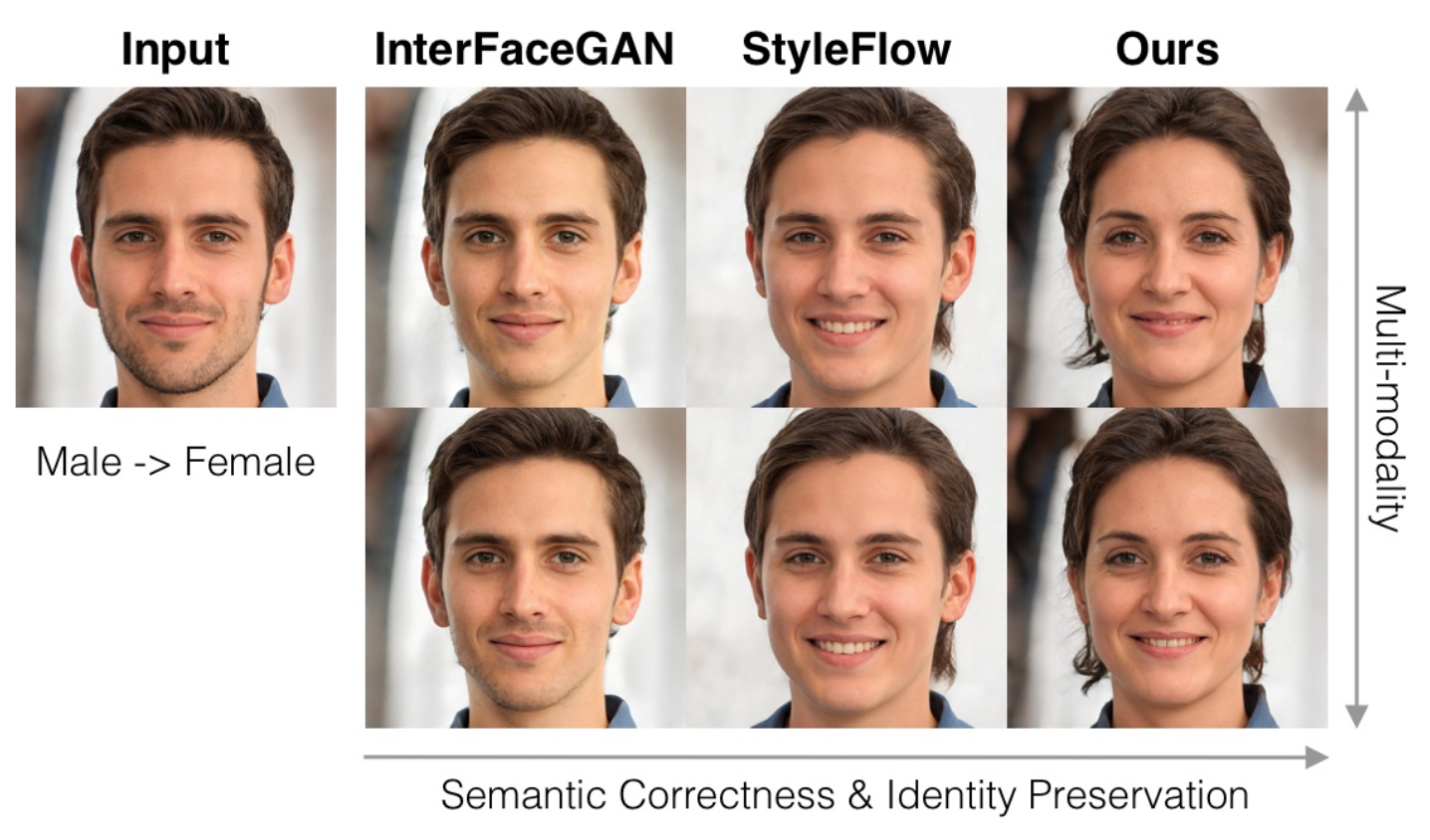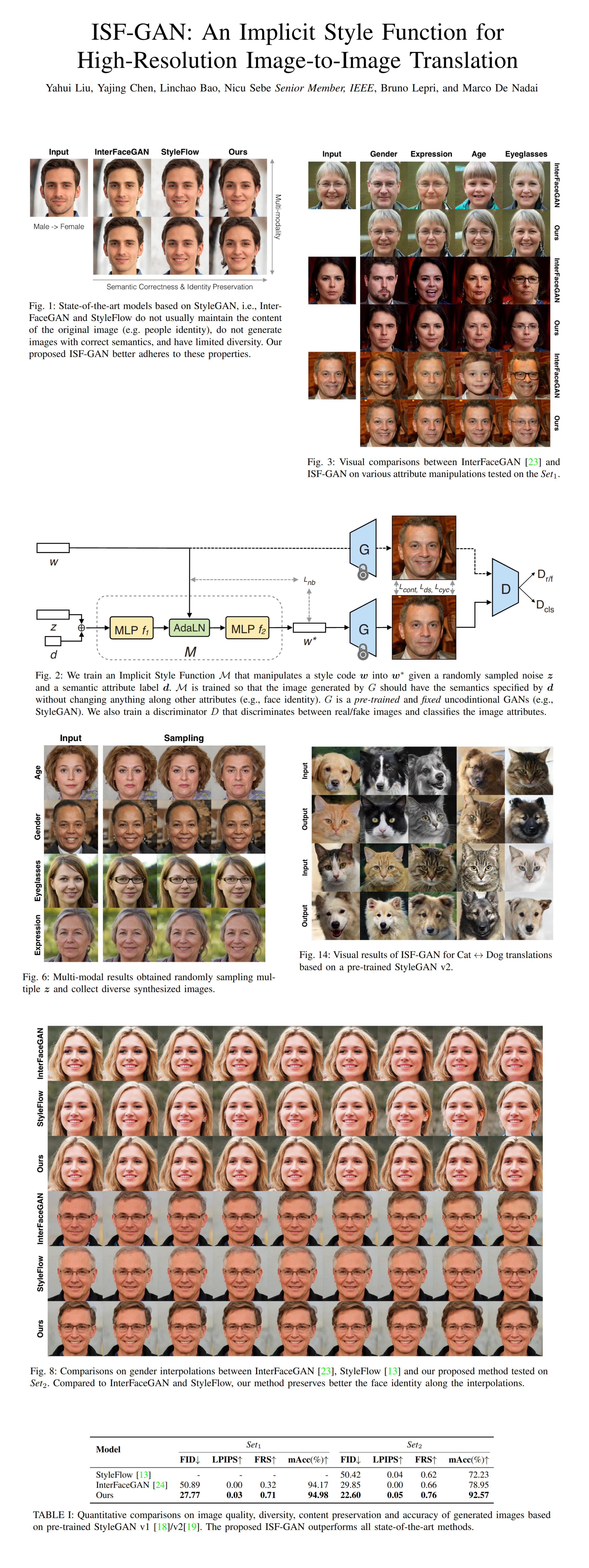59: ISF-GAN
ISF-GAN: An Implicit Style Function for High-Resolution Image-to-Image Translation by Yahui Liu et al. explained in 5 minutes.
⭐️Paper difficulty: 🌕🌕🌕🌑🌑

🎯 At a glance:
I often find myself wishing I knew how to edit images in photoshop but I remember that I already have a full-time job without attempting to learn photoshop. This is where ISF-GAN by Yahui Liu et al. comes in. This new model performs cost-effective multi-modal unsupervised image-to-image translations at high resolution using pre-trained unconditional GANs. ISF-GAN does this by modeling the latent style vector update with an MLP conditioned on a random vector and an attribute code.
⌛️ Prerequisites:
(Highly recommended reading to understand the core contributions of this paper):
1) StyleGAN2
2) StyleFlow (optional)
🚀 Motivation:
Training task-specific GANs in high resolutions is nontrivial and expensive, hence lately the focus has shifted to adapting pretrained unconditional generators with a proven track record (StyleGAN) to various editing and image-to-image tasks. Most methods follow the general pipeline of starting with a latent vector in W+, manipulating it in some way, and passing the updated style code through the pretrained generator to obtain the edited (upscaled, domain-shifted, etc) image. Unfortunately, existing approaches are limited to editing one attribute at a time or change the identity of the person on the photo while applying edits. Moreover, most such methods do not have an obvious way to produce multi-modal results for a single input image. ISF-GAN, on the other hand, uses Adaptive Layer Normalization (AdaLN) in its ISF module for conditional multi-modal latent code editing.
🔍 Main Ideas:
1) Overview:
The goal of this model is to output realistic multi-modal editing results for input images without changing their contents. The proposed way to achieve this goal is with an MLP that transforms the input style vector W+ conditioned on a random vector z and a task-specific vector d.
2) Learning the ISF:
The ISF MLP is trained in an adversarial fashion with a discriminator that classifies the images based on the target attribute d in addition to predicting whether the output image is real or fake. Additionally, the LPIPS, L2, and cycle consistency losses ensure that the content is preserved between images, while a diversity-sensitive loss encourages multi-modal outputs.
3) Injecting the domain and multi-modality:
The authors just switch instance norm for layer norm in the AdaIN and call in AdaLN. The intuition is that channels are correlated in W+ latent codes (the reasoning looks a bit iffy tbh). The complete ISF module is an AdaLN layer between two MLPs and does the following: the domain vector d is concatenated to the random noise vector, goes through the first MLP, and becomes the condition in the AdaLN layer that transforms the input W+ style code before passing it through the second MLP to obtain the final code.
📈 Experiment insights / Key takeaways:
- ISF-GAN favorably compares to InterFaceGAN, StyleFlow, and StarGAN on a custom synthetic labeled dataset as well as the public test set from StyleFlow in terms of FID, LPIPS, Accuracy, and Arcface (used as a metric, not a loss, huh).
- The edited attributes are gender, smile, age, and eyeglasses.
- Mostly standard self-congratulatory GAN results are reported, nothing out of ordinary here.
- From ablations: content loss helps with interpolation and identity preservation
- replacing AdaLN with AdaIN decreases FID and FRS
🖼️ Paper Poster:

🛠 Possible Improvements:
- Authors didn’t really include any
- I would suggest thinking of a way to incorporate the encoder in an end-to-end fashion (or think of a way to skip it altogether)
✏️My Notes:
- (3/5) so many utilitarian names lately :(. Although “Implicit Style Function” is clear and concise.
- Looks like a good (and much simpler IMHO) alternative to StyleFlow
- I wonder why there aren’t any comparisons to StyleCLIP since the ideas for the latent mapper are so similar
- I still think the main crux of all these amazing editing approaches is the inability to process real images off-the-shelf without an external encoder, in other words, your editing is only as good as your encoder
- I am surprised that the arcface loss is not used here at all for identity preservation
- Do you have any questions left about ISF-GAN? Let’s discuss in the comments!
🔗 Links:
ISF-GAN arxiv / ISF-GAN github <- Available later?
🔥 Check Out These Popular AI Paper Summaries:
- SOTA Single Video Generative Model - VGPNN
- Instance Conditioned GAN - Arbitrary similar image generation
- GSN - Generative Scene Networks (VR NeRF)
👋 Thanks for reading!
Join Patreon for Exclusive Perks!
If you found this paper digest useful, subscribe and share the post with your friends and colleagues to support Casual GAN Papers!
Join the Casual GAN Papers telegram channel to stay up to date with new AI Papers!
Discuss the paper
By: @casual_gan
P.S. Send me paper suggestions for future posts @KirillDemochkin!